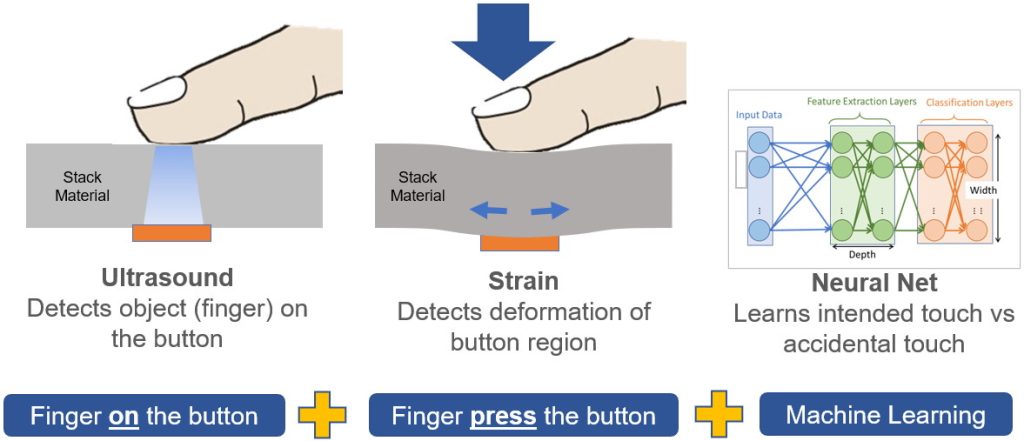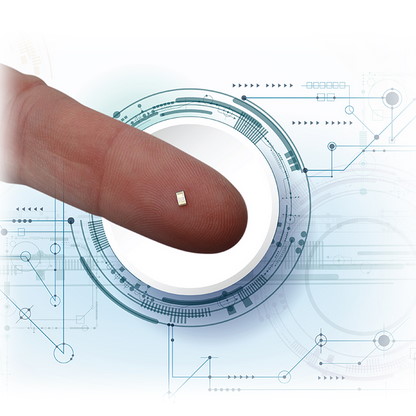The concept of age is much on my mind at the moment. Well, yes, theoretically I will be turning 65 in a few months’ time, thank you so much for bringing this to everyone’s attention, but that’s not what I meant. On the other hand, since you’ve seen fit to open this can of worms, I must admit that I’m pondering the idea of simply re-celebrating my 64th birthday over and over again — a sort of groundhog birthday, if you will — thereby ensuring that I shall live forever.
In my recent column, Welcome to a World of Reconfigurable Intelligent Surfaces, I waffled on, as is my wont, about how people like to categorize things in terms of “ages,” like the stone age, the bronze age, the iron age, and the industrial age.
Some people take a different tack and talk about the pre-mechanical age, the mechanical age, the electromechanical age, and the electronic age. Personally, I am convinced that we will soon crack the door open into the materials age, as part of which we will have the ability to “print” new materials atom by atom on an industrial scale.
There are those, of course, who say we are currently careering through the computer age, while others would class this as being the information age, since we have such ready access to information (I love the internet), or the data age, since we are creating, capturing, copying, and consuming so much of the stuff.
According to a Statista report on the Amount of Data Created, Consumed, and Stored Worldwide 2010-2025, for example, there were two zettabytes of data worldwide in 2010, where — under the metric system — one zettabyte is 1,000 exabytes, one exabyte is 1,000 petabytes, and one petabyte is 1,000 terabytes. By 2020, the amount of data sloshing around the globe had increased to over 64 zettabytes, and it is expected to rise to more than 180 zettabytes by 2025.
But where does all this data come from? Well, a prime source is sensors. Sensors have been around for yonks, of course, but things are changing so rapidly in this area that certain persons might posit we are poised to plunge into a period (some may say an age) of sensors.
When I think about sensors — and I think about them a lot (I really need to get a life) — I never fail to be amazed at how fast things are moving and how quickly things are changing in this domain. Take 3-axis electro-mechanical gyroscopic sensors, for example. It’s not so long ago (circa the 1960s) that these complicated contraptions, which were used for tasks like guiding B-52 strategic bombers to make new friends, were the size of small oil drums and cost hundreds of thousands of dollars. By comparison, today it’s possible to purchase a MEMS (micro-electromechanical system) equivalent that’s only millimeters in size and costs only a few dollars for a one-off. Consider the BNO055 from Bosch, for example. This little beauty contains a 3-axis accelerometer, a 3-axis gyroscope, a 3-axis magnetometer, and a 32-bit cortex M0+ microcontroller providing sensor fusion, all in a teeny-tiny 3.8 x 5.2 x 1.1 mm package.
So, what would you say is arguably one of the oldest and — at the same time — currently one of the most prevalent sensors on the planet? Might I be so bold as to suggest the humble switch?
I’m not talking about knife switches, of course, because these are rarely used these days. Now that I come to think about it, I’m not even sure when knife switches were invented, although it had to be before the end of the enlightenment and romanticism period in the 18th century. I can state this with some degree of certainty because this is when the eccentric young scientist Victor Frankenstein performed his unorthodox scientific experiment to create a sapient creature out of old body parts and outlandish chemicals. Young Victor was definitely using knife switches at that time because I distinctly remember seeing an old movie of him working in his laboratory with his assistant George (a.k.a. Igor or Egor to his friends), and if there’s one thing George knew how to do well, it was to activate a knife switch with gusto and abandon.
What I’m talking about is pushbuttons, which first appeared on the scene circa 1880, and the modern incarnations of toggle switches, which bid the world a hearty hello circa 1916. Interestingly enough, as noted by media studies scholar Rachel Plotnick in her article At the Interface: The Case of the Electric Push Button, 1880-1923, in 1916, educational reformer, social activist, and best-selling American author Dorothy Canfield Fisher warned that “There is a great danger of coming to rely so entirely on the electric button and its slaves that the wheels of initiative will be broken, or at least become rusty from long disuse.” I dare not think what Dorothy would have thought to see us now, surrounded by pushbutton and toggle switches of all shapes and sizes.
The point of all this is that, when you come to think about it, surrounded as we are by technologies that would make our forebears gasp in awe, squeal in surprise, and dance in delight, it seems almost anachronistic that we should continue to rely on 100-year-old switches to turn everything on and off, make things get brighter/louder or dimmer/quieter, and wend our weary way through hundreds of channels of dross using our wireless TV remote controls (see also The Ultimate Guide to Switch Debounce).
But turn that frown upside down and transform it into a smile, because help is at hand. I was just chatting with Daniel Goehl, who is the Co-Founder and Chief Business Officer of UltraSense.
Just to establish Daniel’s street cred, we should perhaps note that in the early 2000s he was a founding member of InvenSense, whose MEMS motion sensors are famous throughout Silicon Valley. InvenSense, which was acquired by TDK in 2016, shipped a couple of billion motion sensors back in the day, which is not too shabby whichever way you look at it.
What we are talking about here is a sensor so small that it makes a grain of rice look cumbersome and crude (and we’re talking short grain rice, not its long grain cousin). This sensor can be embedded in, or mounted behind, any material (metal, plastic, glass, wood, leather…) of any practical thickness (say 5 mm for plastic or 2 mm for steel), which makes for great aesthetics whilst also making it immune to things like water and contaminants.
Let’s start with the TouchPoint Z sensor, in which everything is presented in the same package. By “everything” I mean an ultrasonic transducer, four tiny piezo strain gauges, a microcontroller unit (MCU), and an analog front end (AFE). Communication with a higher-level system is provided via I2C or UART interfaces. The reason for combining the ultrasonic transducer with the strain gauges is to allow designers to make more intelligent decisions, thereby facilitating the creation of user interfaces (UIs) that increase the user experience (UX) while minimizing user frustration (UF) (I’m sorry, I couldn’t help myself, I just made the “UF” part up).
In the case of competitive capacitive interfaces, for example, they sometimes don’t work due to moisture (I can’t use my smartphone when I’ve just washed my hands, for example) or they work when you don’t want them to. Consider this report regarding Tesla’s New Steering Yoke, for example, where one driver noted “I accidentally washed the windshield and honked the horn at innocent road-goers while making turns.” By comparison, when using a TouchPoint Z device, the ultrasonic sensor (the “touch” sensor) detects the presence of an object like a finger on the “button,” while the strain gauges (the “force” sensors) detect the deformation of the button region due to pressing (they can detect deformations as small as 100 nm).
More recently (a couple of weeks ago as I pen these words), the guys and gals at UltraSense introduced their TouchPoint Edge + TouchPoint P combo. In this case, the TouchPoint Edge is an SoC that supports up to eight channels of TouchPoint P touch and force sensors. In addition to the MCU and AFE, the TouchPoint Edge also boasts a neural touch engine (NTE) for processing a convolutional neural net, thereby supporting native machine learning (ML), which can be taught to differentiate between intended vs. accidental touches.

Operating principle for UltraSense solutions (Image source: UltraSense)
To me, this is where things start to get really exciting. The only other ultrasonic sensors of which I am aware in this arena are just that — single-mode ultrasonic sensors only. The addition of force sensors in the form of strain gauges to provide a multi-mode sensing capability provides designers much more to work with. Coupling all this with an embedded, always-on NTE to discern intended touches from unintended “false” touches, eliminate corner cases, and provide the input accuracy of a mechanical button takes things to the next dimension.
Based on this technology, it’s easy to envisage a new world festooned with smart surfaces; that is, solid surfaces with underside illumination to show the user where to touch. This will change the ways in which we interact with our products and systems, taking us one step further to a Jetson-esque future. What say you? Are you as excited by all this as am I?






” actuation actuated ” feedback ( which clicky-feel does inherently ) saves me from personal aggravation at being forced to wait on the dumb bucket of bolts, presumably to appreciate agape the digital wonder of it all
even from the list of feedback second-bests ( display, beep ), the control is tolerable if not too awkward
I have to admit that I do like the feel of a classic (preferably vintage) toggle switch — I also like the fact that in modern TV series like Cowboy Bebop (https://www.netflix.com/title/80207033) we see a mix of modern (spaceships) and vintage (control panels replete with toggle switches)
Supply-chain issues, no doubt.
Good one!